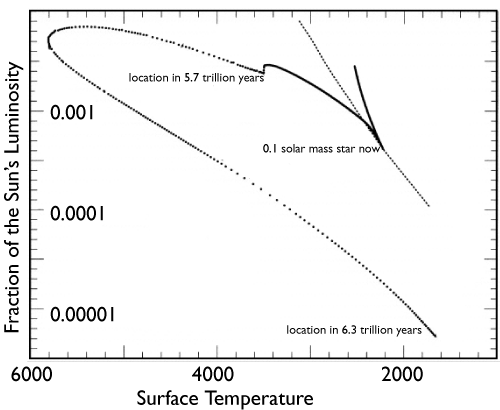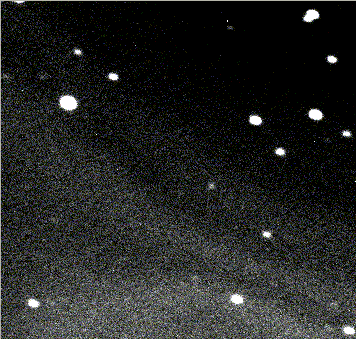That Sunday Afternoon Feeling7
greg posted in worlds on November 30th, 2008

Academics across the United States know the feeling at the end of the long Thanksgiving weekend. Four days were to be given over (at least partially) to catching up with a long list of slipped deadlines and overdue tasks. Like the last line of a haiku, Sunday afternoon arrives.
The red dwarf stars, on the other hand, have mastered the art of having enough time. A trillion years from now, the science of extragalactic astronomy will have long since ended, but Proxima Centauri, our nearest stellar neighbor, will be shining more or less unaltered from its current recessionista persona.

Proxima will never turn into a red giant. Like the other low-mass red dwarfs, it will grow steadily brighter and bluer as it ages, eventually turning itself into a helium white dwarf that gradually cools and fades to black.

The galaxy is filled with red dwarfs, and so as a result, the total luminosity of the Milky Way will stay surprisingly constant for a long time to come. A few years ago, Fred Adams, Genevieve Graves and I wrote a conference proceedings that looks in detail at the future luminosity evolution of the galaxy.
As the Milky Way’s stellar population ages, the more massive stars (The Sun, Sirius, Alpha Cen A & B, Tau Ceti et al.) die off . For hundreds of billions of years, their flagging contributions to the galactic luminosity are very nearly compensated by the increase in luminosity of smaller stars. This state of affairs will persist until about 800 billion years from now, at which time the remaining main sequence stars will all have less than ~30% of the solar mass. These stars never experience the large luminosity increase associated with the red giant phase, and the galactic light curve declines gently for about 7 trillion years as the lowest mass stars slowly die. During this long autumn, the galaxy as a whole should look quite blue, because the light is dominated by stars that have aborted their journey up the red giant branch and grown bluer. Eventually, after about 8 trillion years, even the smallest stars have run out of hydrogen and the night sky finally goes black for the duration.

Just trying to put the arrival of Monday morning in perspective.






















































































